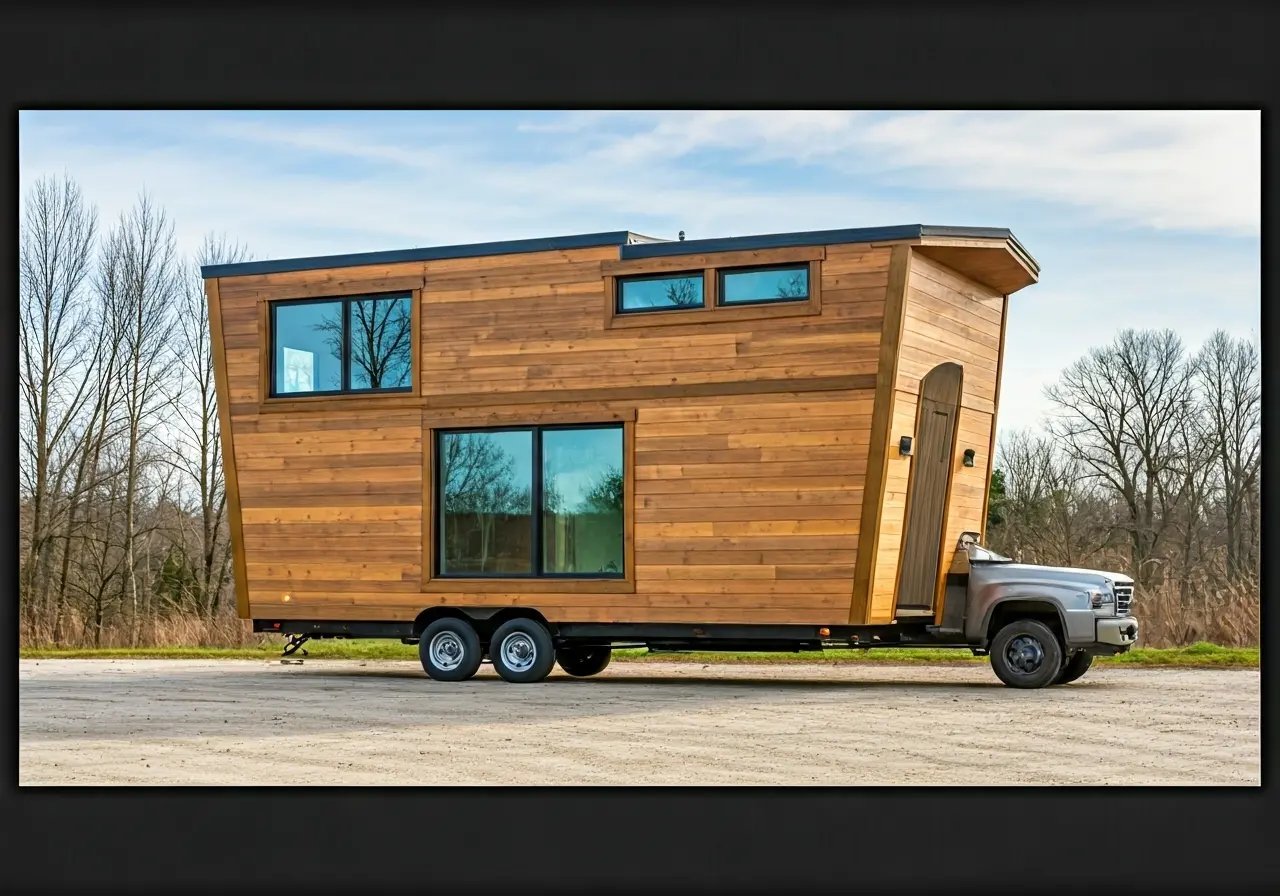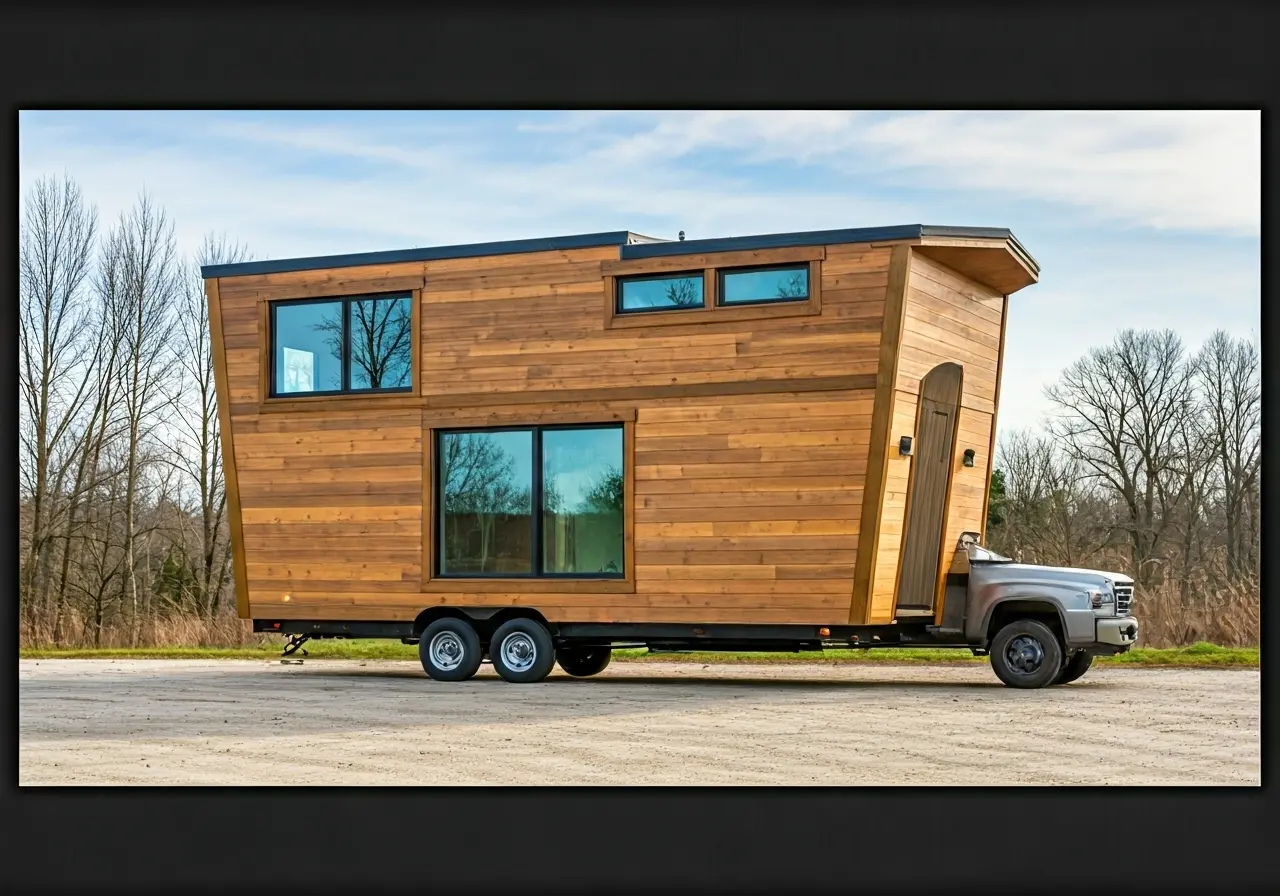Moving a tiny house might seem simple given its size, but there are a handful of factors to consider that can influence the overall cost. Whether you’re relocating for a change of scenery or simply transporting your dream home to a new plot of land, understanding these costs is crucial for planning your move effectively.
Understanding the Basics of Tiny House Moving Costs
At its core, moving a tiny house involves expenses such as permits, labor, and transportation. Let’s look into each cost component to give you a full picture of what’s involved.
Basic transportation costs can range from $1,000 to several thousands of dollars, depending on various factors like distance and route. Having a better understanding of the breakdown for the move will help in budgeting appropriately. Also consider the shift from a foundation-built tiny home to a mobile one, as this situation can have a whole set of different transportation costs and considerations.
Apart from transportation, you’ll need to consider utility disconnection fees, which can vary depending on the complexity of your hookups. Don’t forget about permits (each region may have specific laws regarding the movement of what’s considered an oversized load). A key part of moving is compliance, so make sure that you have all of the appropriate documentation to legally transport your home.
Finally, we strongly advise thinking about insurance during transit to cover potential damages along the route.
How Distance Affects Tiny Home Moving Costs
One of the biggest factors affecting cost is the distance of the move. Longer distances will use more resources and time, resulting in an increased cost.
Let’s take an example: moving locally within 100 km might be on the lower end of the spectrum, costing between (1,000–)3,000. However, if you’re considering a cross-province relocation, you could be looking at upwards of (4,000–)8,000 or more.
Remote or rural access also has its own implications. Poor road conditions or accessibility issues can lead to even more costs due to the need for more specialized transport solutions or equipment. Roads less traveled mean more precautions and possibly more time, both of which can add to the moving expenses.
The complexity of the route plays a crucial role in determining the overall costs associated with the move. So, we recommend getting well acquainted with your moving route to make the best cost estimate the budget more accurately.
What Permits and Legal Documents are Required to Move a Tiny House?
Permits are essential for legal and safe transport of a tiny house. Costs can vary based on location and regulations. Look into your provincial regulations, especially since most tiny houses need wide-load permits due to their size. Depending on the size and weight of your home, you might also require escort vehicles, which add to the licensing fees and time constraints associated with long-distance relocations.
If you can’t secure the necessary permits, it can lead to delays and even some hefty fines. Preparation is key; so make sure to understand the regulatory landscape ahead of time to allow for a smoother transition. Also don’t forget that different provinces might require specific notice periods for permit applications, especially for extensive relocations, which can impact your planning and timeline.
Preparing Your Tiny House for the Move
Now, let’s look at what we need to do to the tiny house itself to prepare for the move…
Start by securing all items, detaching utilities, and possibly modifying the structure to meet travel requirements. This process isn’t just about packing boxes; it involves a deeper attention to detail by detaching any external components such as porches or decks that don’t conform to transport regulations. Make sure every piece is secured to prevent shifting during transit to avoid damage.
Next, you’ll need to consider the site preparation at the destination, which could mean additional grading or ensuring accessibility for transport vehicles. Preparing a site might include checking utility hookups or establishing a foundation for when the tiny house arrives. This might seem trivial, but can add significant costs if they aren’t factored into the initial budgeting.
What are The Transportation Options and Their Costs
Options range from hiring professional movers to renting equipment for a DIY move. Each choice has its own cost implications, which need careful consideration. While a DIY move might seem appealing for more budget-conscious movers, it demands both experience and familiarity with regulatory needs. This often involves renting a towable trailer or arranging a flatbed transport service.
However, opting for professional movers can simplify the process significantly. Professionals not only provide the necessary equipment but are also familiar with handling specific requirements like wide-load transports. They bring valuable experience in managing logistics, ensuring that regulatory requirements are met, and that each phase of the transport chain functions seamlessly.
Additional Services and Hidden Costs in Moving
Beyond the basic costs, additional services such as storage, insurance, and unexpected repairs can impact your overall moving budget. Insurance is critical, providing coverage in case of damage to your tiny house during transit. Storage might be necessary if there’s a gap between move-out and move-in dates, adding another cost layer to the budget.
Utility connection and disconnection fees at both ends should be planned for, along with any temporary housing if the transport gets delayed. Awareness of these supplemental costs beforehand can help you avoid budget pitfalls, ensuring a smooth financial journey through your tiny house move.
Planning the Move Without Breaking the Bank
Moving a tiny house involves various considerations, from permits and preparation to the actual transportation and additional services. By breaking down each aspect of the move, you can plan effectively and ensure a smooth relocation that fits your budget. Understanding these costs upfront can help you avoid surprises and enjoy your tiny house wherever it may roam.
FAQs
1. Can I move a tiny house myself?
Yes, if it’s legally towable and under your province’s vehicle regulations. However, many moves require special permits and equipment best handled by professionals.
2. Do I need a permit to move my tiny house in Canada?
In most cases, yes, especially if the home exceeds 8.5 feet in width. Each province has different rules, so consult with transport professionals or local ministries.
3. How long does it take to move a tiny house?
Local moves can be done in a day. Long-distance moves may take 2–5 days depending on route and logistics.
4. Does my tiny house need to be insured during transport?
Yes. Some moving companies offer insurance or require proof of homeowner coverage that includes transit.
5. What if my tiny house is on a foundation?
Relocation becomes significantly more complex and costly. You’ll need to lift it, remove it from the foundation, and potentially disassemble elements before transport.








